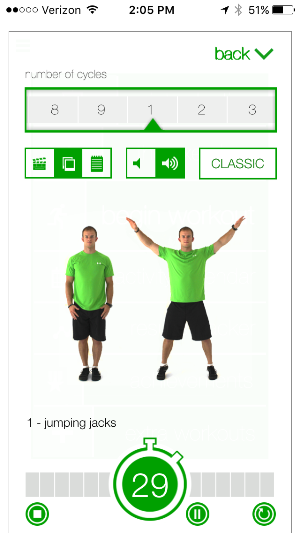
Photo credit by Carissa Andrews
We’ve all heard it before. Sitting on your rear all day, regardless of why, is literally killing you. There’s even a name for it: Sedentary Death Syndrome (SeDS). Did you know inactivity kills more than 300,000 Americans annually? If SeDs were a true disease, it would be the 3rd biggest killer in the country; behind only heart disease and cancer. If you’re in an office job without an outlet for movement, you may want to take note. Obesity is skyrocketing at an alarming rate. According to the
CDC, more than one-third of the American population is obese (roughly 78.6 million people). This isn’t just a US thing, either. All around the world, lack of movement is causing some pretty serious health complications.
Being sedentary is connected with a host of complications and ailments – including, but not limited to: hypertension, heart disease, muscle weakness, diabetes, depression, osteoporosis, some forms of cancer, and even sexual dysfunction. Of course, the best way to combat SeDS is by getting up and moving. A minimum of 30 minutes of moderate exercise most days of the week is all it takes to slash your risks of all the bad stuff SeDS has to offer in half.
Unfortunately, in an era where we’re all working longer hours, more days of the week, it’s hard to find time to get in that basic amount. Add kids into the equation and you may feel like calling it quits before you even begin. I know I have at times. However, there are some fun ways to sneak in activity into your day without it causing too much disruption to your routine.
5 Ways to Combat SeDs
1. Flash Workouts
30 minutes at one time may seem like a lot, but there’s nothing saying you have to do it all at once. While the heart-health benefits of a longer routine are there, simply getting up and moving can be as simple as three 10 minute walks, or workout sessions. Even if you’re sitting in an office, it’s not hard to take a break to stretch, jog in place, do some jumping jacks, or pushups for a short period of time. Research has even proven taking any kind of break from your mentally taxing work will make you more productive when you return. Plus, the added blood flow to the brain will help you out, too.
2. Lunchbreak Run
Working through your lunch break may seem like it’s helping you, but it’s not. Chances are, you’re still sitting and probably over-eating because you’re not present with your food. Take the time you are given to get up from your desk, eat your lunch at a park, and go for a 20 minute to half-hour run/walk. You’ll find, after making this part of your routine, you’ll come to cherish the time for you rather than cringe against it.
3. Standing Desk
Since sitting is part of the problem, some people swear by mixing up their office setting with a standing desk. They come in many different options, including ones that can convert to sitting desks as well. While it may not seem like much, standing for an hour burns an average of 20-30 calories more than sitting does. Plus, it has the added benefit of keeping your posture in tip top shape.
4. Walking Desk
Taking the standing desk to a whole new level is the walking desk; also known as the treadmill desk. These fancy new machines are useful for keeping you active, and allowing you to multitask at the same time. Who doesn’t love that? Most variations have speeds that only reach to 2-4mph, to keep you moving at a comfortable pace while managing your other tasks. Do you already have a treadmill collecting dust? There are desks out there to help you convert to a walking desk, but be sure to use appropriate speeds and leave plenty of space behind your treadmill. One interesting side effect of this machine is the tendency to get sea legs afterwards (or feel like everything is still moving when you’ve stopped). However, I’m sure you’ll agree the extra 100 calories (or more!) an hour you’re burning even when walking at 1mph is well worth the temporary sensation.
5. Wearables and Apps
Sometimes, getting up and moving is less of a problem of doing it and more of a problem in remembering to find time. Luckily for us, we live in a time when wearables can track how much movement we get, how many steps we’ve taken, and are readily accessible for nearly every budget. In addition, there are myriad apps that can trigger us to drink more water (like
Daily Water) or get up for a break when we need it (like
Break Reminder). Not to mention ones that can help us find exercises to do (like
7MWC or Jillian Michaels’ Weight Loss), track our runs (
MapMyRun) or bike rides (MapMyRide), amongst many other useful health related operations.
While we live in a world now that requires less movement and more brain power, it’s important to find ways to maintain our health and activity. Sometimes it’s a matter of making a decision to be more active, taking the first step, and sticking with it. “Trust the process" is the best motto I can give when you begin something new and you’re unsure of the results. A year from now, even if you only make one of the changes listed above, you may be surprised at how far you’ve come and how much your life has changed. With a little luck, that will include how much your health has changed – for the better.
###
Carissa Andrews is a freelance writer, graphic designer, and author. You can learn more about her at her website.